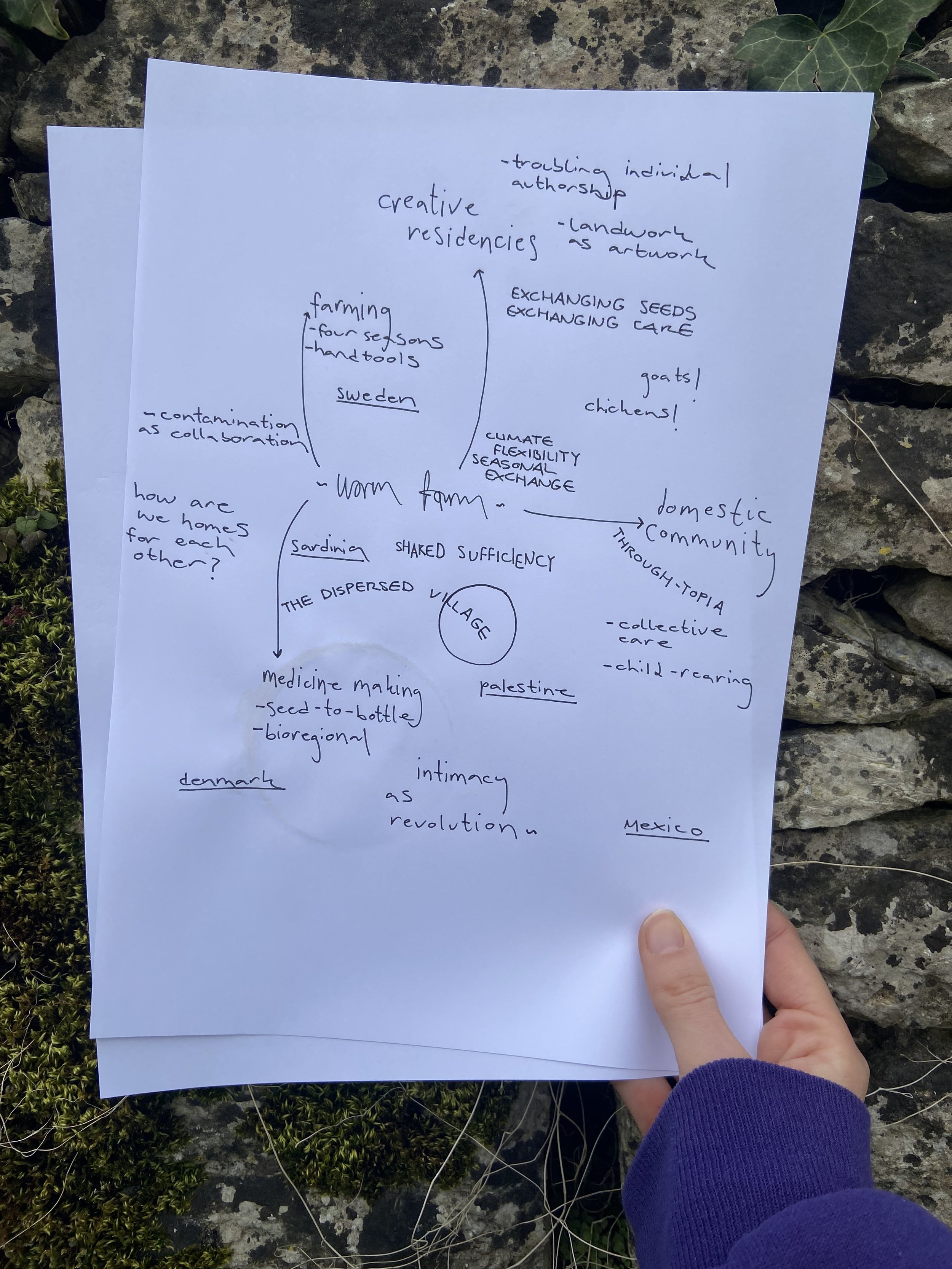Worm Farm is a cultural project that intends to be composed of a handtool-only vegetable farm, a bioregional seed-to-bottle herbal medicine business, an art residency site, and a creative domestic experiment in living as through-topian questioning of what community might look like beyond prevailing neo-colonial concepts of nation, family, and future. It doesn’t yet have a physical site, but it thinks it’ll probably end up based somewhere in central Sweden, in a red wood-clad farmhouse with enough acreage for a pond-based aquaculture filtration system and hopefully a couple of polytunnels.
In its current form it manifests through site-based activations in locations with pre-existing intimacies between the hosts and me - visually mapping wild growing medicinals in a neighbour’s orchards batch preserving root crop gluts from local farms, or teaching medicine-making as art practice at a friend’s market garden. It is interested in the way that human-to-human relationships inform and impact exchange with more-than-human agents, in how our porosity is not just between ourselves and the natural world but also ourselves and each other, the ecological of our interpersonal interactions, our co-contaminations.
The project’s aspiration is to relate with any given piece of land through an expectation not of extraction, but collaboration: of reading a landscape like you would a tarot card, as if it is its own instigator of activity, as opposed to an inert location where action happens to takes place. Seeking to collapse an artificial boundary between plants as food and plants as medicine, all branches of the Worm Farm framework hope to curate socially-activating experiences and physical in-gestations that are nourishing on a physiological, emotional, spiritual, cultural, ecological and bacterial level, on the level of embodied existence that doesn’t understand the human body as separate from the biome and beings surrounding it.
Worm Farm (the idea) exists as part of a network of already extant land-based projects that are collectively considering what might a dispersed village look like - how can resources (seeds, labour, care, olive oil) be stacked onto traveling emissions and shared across visa limitations - how (literally) fertile can our friendships be. What is a village without geographic proximity but with commitment to longevity. How do we host each other when our local climates become at times and by turn uninhabitable due to heat or cold or war or flood. How do we uphold our divergent cultural embeddedness in distinct contexts whilst simultaneously investing in sincere intimacies that embrace non-hierarchical families, queer connections, and the collective raising of children.
Ultimately the network desires to abandon the false seduction of self-sufficiency in the face of climate breakdown (no thanku to the bunkers) to explore instead a shared-sufficiency, a vulnerable sufficiency, to embrace materially, to make visible, what is true and known also emotionally - that we need each other.
